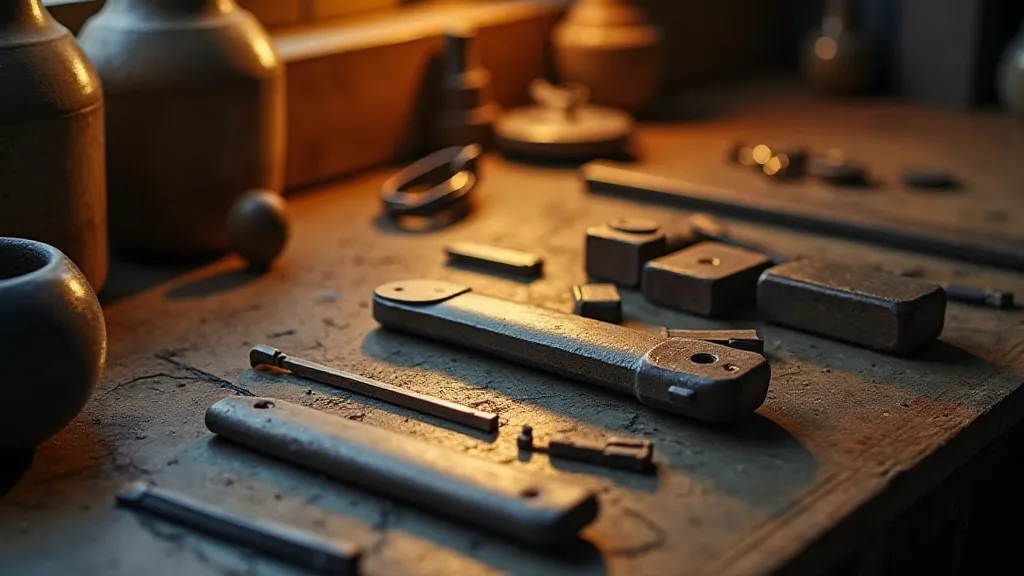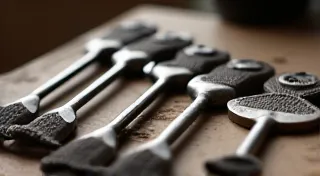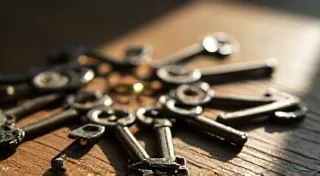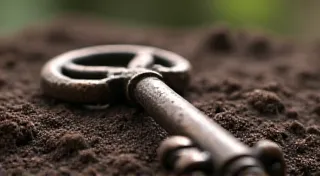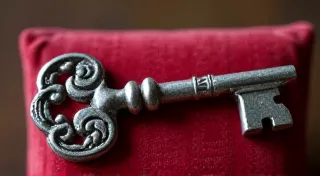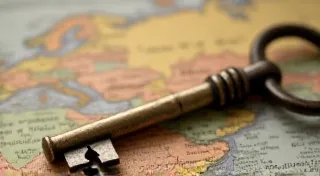The Cartography of Absence: Unlocking Lost Narratives in Antique Keys
There’s a particular quietness to holding an antique key. It’s not the silence of emptiness, but the hushed expectancy of something untold. For decades, perhaps centuries, it's waited, nestled in a forgotten drawer, tucked away in a dusty attic, patiently guarding a memory. Each scratch, each subtle indentation, isn’t merely wear; it's a faint echo of a hand that turned it, a door it unlocked, a life it touched. More than just metal and warding, antique keys are fragments of vanished lives, cartographies of absence, whispering stories we can only partially decipher. My own fascination began with a single key – a small, ornate brass key found amongst my grandmother’s belongings after she passed. It unlocked nothing I could identify, a frustrating mystery that ignited a lifelong pursuit of understanding the lives it represented.
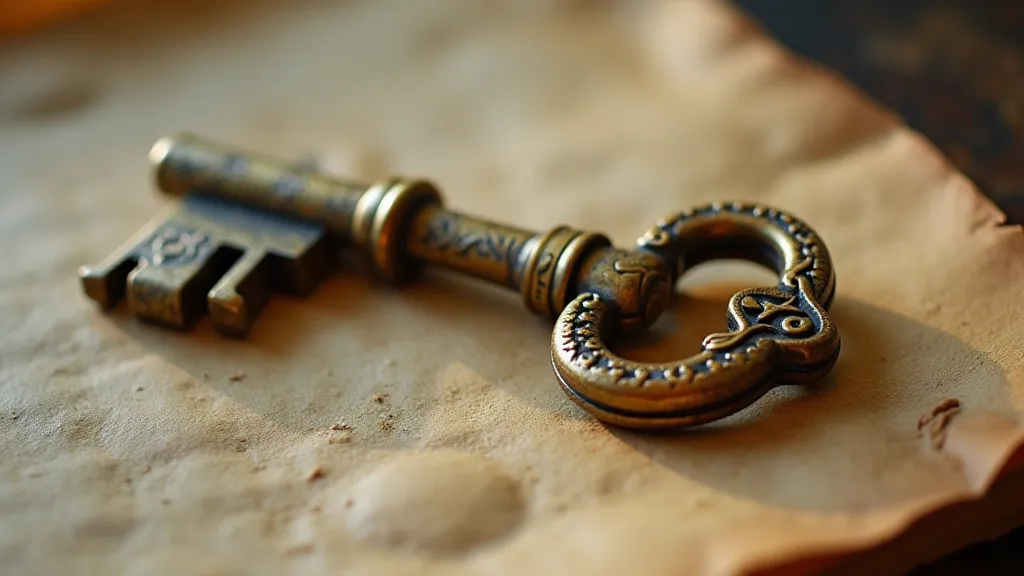
A History Forged in Iron and Necessity
The history of keys stretches back to ancient civilizations. Simple pin tumbler mechanisms appeared in ancient Egypt and Mesopotamia, evolving alongside the development of locks, initially used to protect grain stores and royal treasures. Early keys were often made from wood or bone, fragile tools compared to the iron and brass that would later dominate their construction. The skeleton key, so emblematic of antique key collecting, emerged in Europe during the 16th and 17th centuries. Initially designed to open multiple doors with a single key – a convenience for estate owners and servants alike – the skeleton key's versatility also contributed to its ubiquity. They allowed for a degree of control and access that was both practical and, occasionally, problematic, which adds another layer to their narrative potential.
The Industrial Revolution dramatically changed key production. Mass manufacturing techniques, while increasing affordability, also began to standardize designs, subtly eroding the unique craftsmanship that characterized earlier examples. The rise of mortise locks, with their intricate and specific keys, reflected a growing desire for greater security and personalization. Key blanks became more common, allowing locksmiths to customize keys for individual clients, imprinting a faint sense of identity onto the metal. Examining the type of key—skeleton, wafer, bit, padlock—provides a preliminary timeframe and indicates the level of security it once provided.
Deciphering the Language of Warding: Key Identification Basics
The real joy of key collecting, beyond the aesthetic beauty of these artifacts, lies in the detective work. Key identification isn't a science; it's a form of educated guesswork, a blend of historical knowledge and meticulous observation. The ‘bit’ – the jagged or irregular shape of the key’s tip – is the first clue. A bit key suggests a simpler lock mechanism, perhaps for a chest or a cabinet. Ward keys, with their protruding ridges and bumps, typically opened mortise locks, offering a higher level of security. The position and complexity of the wards—the protrusions that interact with the pins in the lock—are incredibly revealing. Some wards were simple projections; others were elaborate cutouts reflecting a locksmith's skill and perhaps even a signature style.
Maker’s marks, often stamped or impressed onto the key's shank (the long, rectangular part), are the golden ticket. These marks can identify the locksmith or manufacturer, providing invaluable information about the key's origin and age. Researching locksmithing history and manufacturer lists is crucial. However, the absence of a maker’s mark doesn't mean a key is valueless. It simply requires a more nuanced approach. Consider the metal used – brass, iron, steel – the overall design, and the style of any decorative elements. Where was it found? Context is everything.
Beyond the Metal: Connecting to Lost Lives
Imagine the hands that once held this key,” I often find myself thinking while examining an antique key. Who was the person who used it? A wealthy landowner safeguarding his estate? A servant entrusted with countless responsibilities? A young woman yearning for a secret rendezvous? The possibilities are endless. The small, delicate key I found with my grandmother – now meticulously cleaned and preserved – remains a mystery. I’ve researched local locksmiths from her era, examined architectural styles of homes in her hometown, but the lock it belonged to remains elusive.
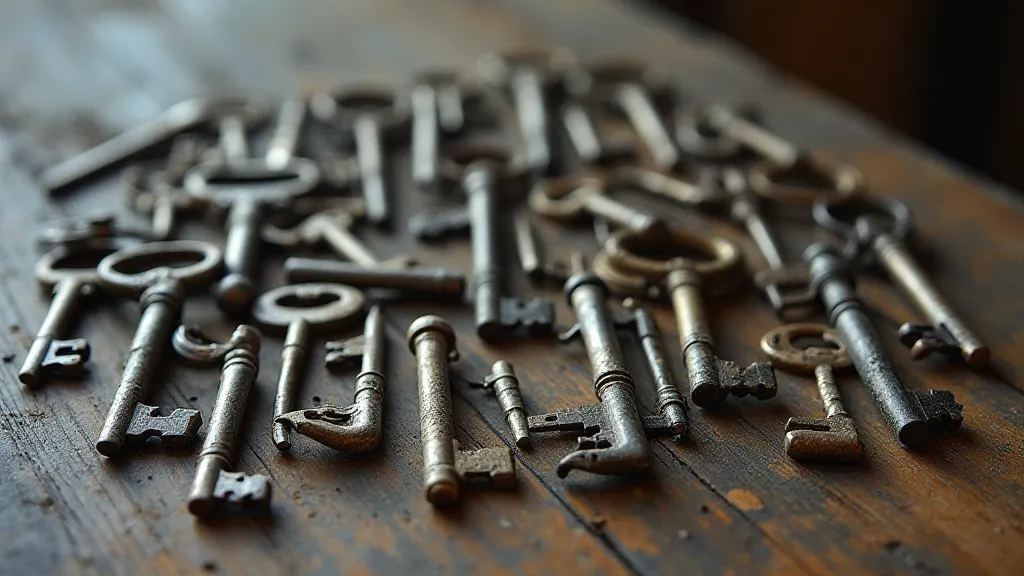
But even the inability to definitively identify its purpose doesn's diminish its significance. It’s a tangible link to the past, a reminder of the lives lived and the stories forgotten. One particular iron padlock key I acquired belonged, according to the estate sale description, to a general store in a small rural town. While the store itself no longer exists, the key evokes a vivid sense of a bustling community, of simple transactions, and of the daily routines of a bygone era. It allows me, fleetingly, to participate in the tapestry of that lost world.
Collecting with Reverence: Restoration & Preservation
Collecting antique keys isn’t about accumulating possessions; it's about stewardship. It's about preserving fragments of history for future generations. When acquiring antique keys, prioritize condition over rarity. Heavily corroded or broken keys can be challenging to identify and often have limited value. Gentle cleaning is often sufficient; harsh chemicals can damage the metal and obscure markings. Rinsing with distilled water and carefully drying are often the safest methods. Avoid polishing, as it can remove patina – the natural aging process that adds character and value.
Consider the ethical implications of restoration. While cleaning is acceptable, extensive alterations should be avoided. The goal is to preserve the key's authenticity, not to create a facsimile of a pristine object. Each scratch, each imperfection, tells a story. They are the silent witnesses to a past we can only glimpse through these diminutive, metallic artifacts. The cartography of absence isn’t just about locating these keys; it's about acknowledging the lives they represent, the doors they opened, and the stories they continue to whisper across the centuries.
